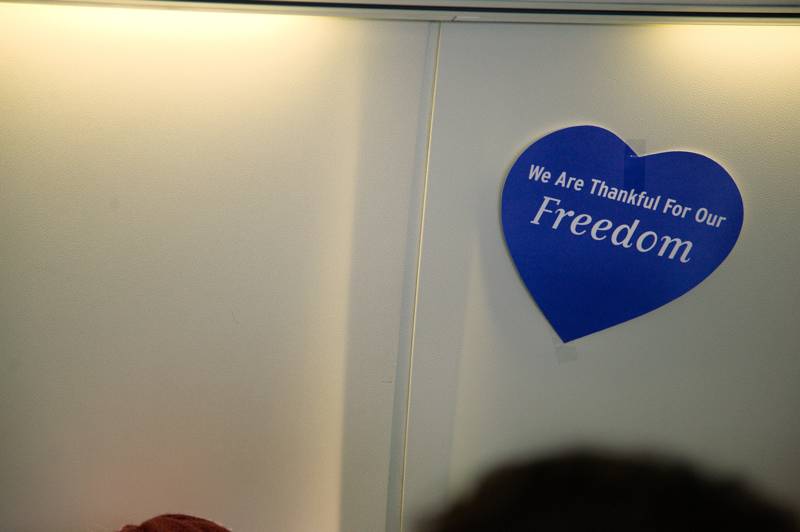The great and the good who sit on the board of San Francisco’s prestigious Asian Art Museum are grappling with problems that run deeper than reviving recession-hit visitor numbers or repairing a dented endowment fund.
A financial derivative gone bad is threatening to become the last straw that tips the museum into bankruptcy – unless a stand-off involving the city and two prominent US financial institutions can be resolved within the next two weeks.
The museum’s problems have touched off a war of words in recent days. Dennis Herrera, San Francisco’s city attorney, fired off letters last week to JPMorgan Chase and bond insurer MBIA, accusing them of taking millions of dollars in fees from the city while washing their hands of the problems to which they have contributed.
“The city’s involvement is not just for the city attorney to write a letter and say it’s everyone else’s problem,” retorted Mitchell Sonkin, chief portfolio officer at MBIA. The city itself had short-changed the museum in recent years, forcing it to draw more heavily on its endowment, and should take part in a rescue.
Regulators Look at Farming Landscape
Food prices are back on the march, and the powerful U.S. farm lobby faces a day of reckoning on Wednesday as the Obama administration wraps up a yearlong study into competition and consolidation in the agricultural sector.
The Departments of Justice and Agriculture are holding their fifth and final workshop to review the competitive landscape in food production and livestock rearing after a unique collaboration that has left some of the industry’s largest players looking nervously over their shoulders.
Monsanto Co. is already embroiled in a Justice Department investigation into alleged anticompetitive practices linked to the sale and distribution of genetically modified seeds that dominate U.S. farming. Dean Foods Inc., the country’s largest milk producer, has also seen antitrust officials move to block a small acquisition.
Lawmakers already have had to wrestle with external forces on the sector, such as the rise of speculative funds that critics contend have inflated prices. The latest run-up in commodity prices has also reawakened the long-running food-versus-fuel debate as Congress decides whether to renew subsidies to the ethanol industry.
Some Data-Miners Ready to Reveal What They Know
Seeking to head off escalating scrutiny over Internet privacy, a group of online tracking rivals are building a service that lets consumers see what information those companies know about them.
The project is the first of its kind in the fast-growing business of tracking Internet users and selling personal details about their lives. Called the Open Data Partnership, it will allow consumers to edit the interests, demographics and other profile information collected about them. It also will allow people to choose to not be tracked at all.
When the service launches in January, users will be able to see information about them from eight data and tracking firms, including BlueKai Inc., Lotame Solutions Inc. and eXelate Inc.
Additional tracking firms are expected to join once the system is live, but more than a hundred tracking firms and big Internet companies including Google Inc. and Yahoo Inc. are not involved.
The Used Car Bubble
Earlier this year in BusinessWeek I postulated that new car sales could well end up higher than most were forecasting. I believed this only because one of the key factors that had been impacting new vehicle sales has been that the used car market was more than overheated, it was on fire. Stories were drifting in from all over about individuals actually paying more money to buy a year-old Honda Accord than they could buy a new one for. And the stories didn’t stop.
Now numerous dealers admit that even they were astonished at how much people were willing to pay for late-model used cars, when the price structure of the market put those vehicles’ prices perilously close to that of a similar vehicle new. Moreover, if one took advantage of the Zero Percent Finance offers adding luster to so many sales today, the monthly payment on the new car is often less than the used model’s.
Of course it was obvious that the used car market was going to look manic compared to historical pricing. After all, the nation has gone from selling more than 16 million new cars annually to barely over 10 million at the bottom of the market. So millions of late model trade-ins won’t hit the used car market for years. Fewer used cars available for resale in a rapidly expanding market equals climbing prices.
Wall Street owes its survival to the Fed
For a brief, surreal moment, the prevailing narrative in Washington was that the 2008-09 bail-outs were not really so bad. In September, Treasury secretary Tim Geithner called the government’s troubled asset relief programme “one of the most effective emergency programmes in financial history”, claiming that the final cost to taxpayers would be less than $50bn.
Steven Rattner, the Wall Street banker who oversaw the Obama administration’s rescue of the auto sector, wrote in the Financial Times in October that “without exaggeration, this legislation [establishing Tarp] did more to keep America’s financial system – and therefore its economy – functioning than any passed since the 1930s”.
But Wednesday’s document dump from the Federal Reserve – a congressionally ordered “WikiLeak moment” – puts this bargain-bail-out patter in a new perspective. The post-Lehman rescues were far broader than Tarp, and far riskier for taxpayers, even if the alternative of a systemic meltdown would have been worse.
Moral Hazard, Thy Price Is $3.3 Trillion
Sunshine doesn’t hurt after all. Bank shares leapt Wednesday despite the Federal Reserve’s detailed disclosure of who got $3.3 trillion of emergency lending during the crisis. That is hardly what investors might have envisaged, given dark warnings from the Fed that such disclosure could endanger financial institutions. The central bank released the data only because of a provision in the Dodd-Frank financial-overhaul bill.
True, it will take time for investors to comb through all the gory details of about 21,000 transactions by multiple emergency Fed lending facilities. And some details may leave firms with egg on their face: Goldman Sachs, which insisted it would have survived the crisis without government assistance, tapped one special Fed facility 84 times to borrow nearly $600 billion in overnight money. Morgan Stanley tapped the facilities more than 200 times.
Even if individual details of the programs aren’t that surprising, the breadth of companies that accessed them is notable. The disclosure shows how far the Fed went in attempting to prop up just about every part of the financial markets, with users ranging from the biggest U.S. and international banks to small firms that peddled complex and often toxic securities, as well as industrial companies such as General Electric, Harley-Davidson and Verizon.
Why the iPad should rival the web
Richard Branson and Rupert Murdoch are entrepreneurs with an admirable record of ignoring conventional wisdom, so it is worth watching when they do the same thing at once.
In this case, they are launching iPad-only publications. Sir Richard bowled into New York on Tuesday to unveil a £1.79 or $2.99 monthly magazine called Project, while Mr Murdoch is about to launch a “newspaper” called The Daily, for which he hopes 800,000 people will pay $1 a week. Both will charge readers in an era when most internet publications are free.
The fact that Mr Murdoch will separate his new daily publication from “the open web” by publishing on the iPad has provoked scepticism and hostility in digital media circles. “Murdoch keeps fighting the internet and the internet keeps on winning,” wrote Mathew Ingram, of the GigaOm technology blog.
This fits into a bigger debate about whether companies are balkanising the web to gain economic leverage. Tim Berners-Lee, the British scientist who invented the World Wide Web, complained in Scientific American about Facebook’s private accumulation of data, and of print publishers’ “disturbing” wish to create closed worlds.
In search of a lightning bolt of rational thought.
In the midst of the biggest green car push in automotive history – what with Chevrolet touting its extended-range electric Volt as the greatest thing since sliced bread while crossing green swords with Nissan, which is shouting similar missives from the rooftops about its all-electric Leaf – it has become readily apparent that the vast majority of the American consumer public couldn’t be bothered. As in they couldn’t care less. That is unless someone – i.e., Washington – is throwing money at them to care.
Hybrid sales in this market are going to finish the year down again, which will mark three straight years of decline, and this includes the $4.00+ per gallon spike in the late spring-summer of 2008, when fuel economy hysteria took hold in the U.S. for four solid months. It seems that the Shiny Happy Green Sensibilities Act – or whatever you want to call the ongoing “shove-it-down-the-American-consumer-public’s-throats-and-they-will-learn-to-lilke-it” mentality that pollutes the political brainiacs/stumblebums in Washington and Northern California – is going nowhere.
As a matter of fact our illustrious leaders in Washington used a considerable chunk of money from the 2009 economic stimulus package to buy up hybrids from various auto manufacturers to prop-up hybrid vehicle sales, couching it as a noble attempt at improving the overall fuel-efficiency of the government fleet, when in fact the real reason was to not only – hopefully – jump-start American consumer thinking into accepting these vehicles as being mainstream choices, but to help the vehicle manufacturers who were battered and bullied to build the vehicles in the first place to keep the production lines going.
But alas, this is the pattern we find ourselves in as a nation at the moment. A minority of the citizenry in an absolute lather about climate change – aided and abetted by maliciously clueless politicos with an axe to grind and an agenda that has more to do with their personal ambitions than it does with such quaint ideas as “being good for the country” – dictating to the majority of the American public how it’s going to be.
Corn Palace is a husk of its former self
In the cornucopia of kitschy roadside attractions, few rival the Corn Palace, a monument to maize that rises from this prairie town’s main drag like a Hollywood prop tossed off the back of a big rig barreling down the interstate.
Its green-and-yellow onion domes and spires tower over Main Street, an otherwise unremarkable avenue of low-rise buildings. Golden husks and hundreds of thousands of colorful cobs — held in place by more than a ton of nails, wires and staples — blanket the exterior. Inside, the enticing aromas of popped corn, candied corn and raw ears of corn float down hallways lined with old photographs of the World’s Only Corn Palace, as it is described in fliers and on billboards.
But times and tastes have changed since the Corn Palace gained fame in 1892, and there is concern about dwindling visits to the attraction, which is key to the economy in this southeastern South Dakota town of 14,500. In a September editorial, the local newspaper, the Daily Republic, called for a “new incarnation” of the venue, which was built as a means of encouraging farmers to put down roots in the region.
Southwest’s Great Culture


We are fortunate to have Southwest serving Milwaukee. Madison service would be that much better, of course.